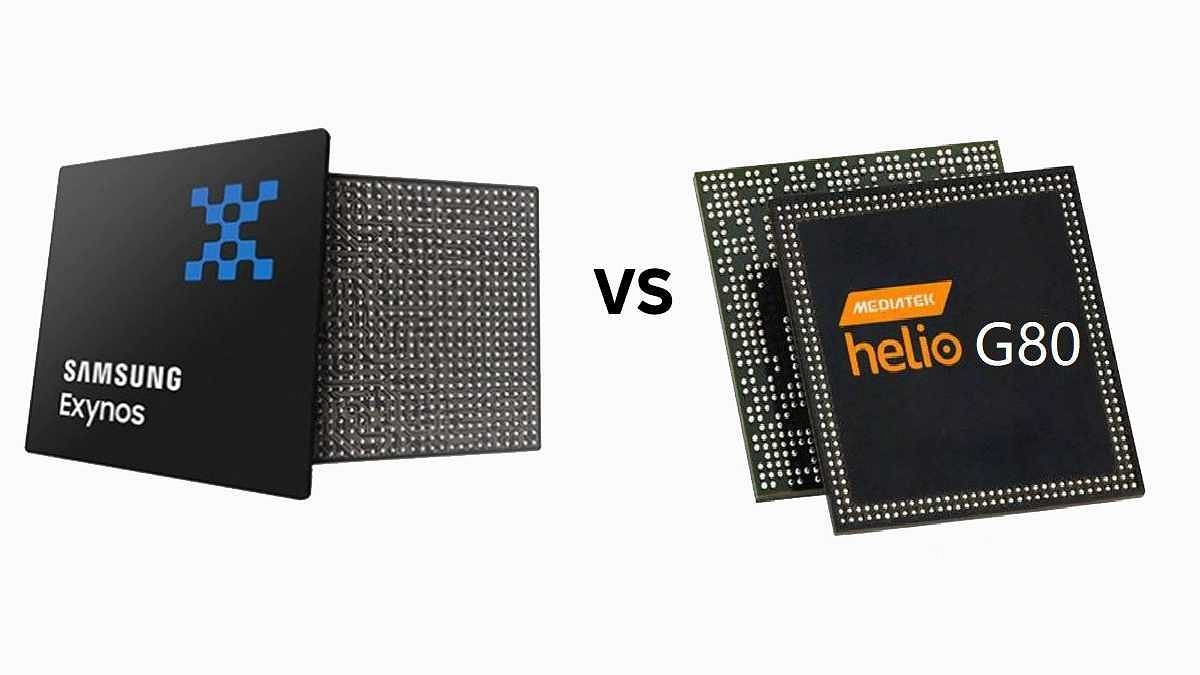Samsung has launched numerous budget smartphones in the last few years and is giving Chinese brands a hard time with its value-for-money products. Samsung uses Exynos series chipsets for all its smartphones including affordable, mid-range, and premium models. The Exynos 850 is one of the most capable mobile processors from the South Korean tech giant. Samsung is taking on MediaTek Helio processors with its affordable Exynos processors. The Helio G80 for instance. The comparison between these two chipsets is listed here. Take a look:
Samsung Exynos 850 Vs MediaTek Helio G80 Chipset: CPU Comparison
Samsung Exynos 850 chipset has an octa-core CPU cluster with all eight cores clocking at 2GHz speed. This chipset is made using an 8nm process and has a 2000MHz frequency. The octa-core Helio G80 chipset also comes with an octa-core CPU cluster and has two Cortex-A75 cores with 2GHz clock speed and six Cortex-A55 cores with 1.8GHz clock speed.
However, MediaTek has designed it using a thicker 12nm fabrication process. This processor is also able to achieve around 2000MHz of frequency. CPU processing capabilities are equivalent on both of these processors, but the Exynos 850 gets an advantage with its thinner fabrication process.
Exynos 850 Vs MediaTe Helio G80 SoC: GPU Comparison
GPU integrated inside the Exynos 850 is Mali-G52 MP1 which is the same as the MediaTek Helio G80 processor. The Bifrost architecture is used to design this GPU. While the GPU is the same with both these chipsets the frequency range differs.
The Exynos 850 GPU frequency is 820MHz, while the Heli G80 churns out around 950MHz frequency. The graphics rendering capability is decent with both of these budget mobile chipsets.
Exynos 850 Vs Helio G80: Memory, Multimedia (ISP)
The Samsung Exynos 850 chipset and the Helio G80 have the same LPDDR4X RAM memory support. The frequency range is different here as well. The Exynos 850 processor has an 1866 MHz frequency range and the Helio G80 has around 180MHz frequency range. The max memory size compatible with the Exynos 850 chipset is 8GB which again is same with the Helio G80. Storage support is also similar that is eMMC 5.1 with the Exynos 850 and an additional UFS 2.1 with the Helio G80.
If we speak of the multimedia type, the maximum display resolution syport is 1080 x 2520 pixels with both Helio G80 and the Exynos 850, while the max camera resolution is 1x48MP, 2X16MP. But the Helio G80 has a higher 2K@30fps video recording and playback support unlike 1K@60fps offered by the Exynos 850. Overall, both these budget mobile chipsets give a neck-to-neck competition to each other.

